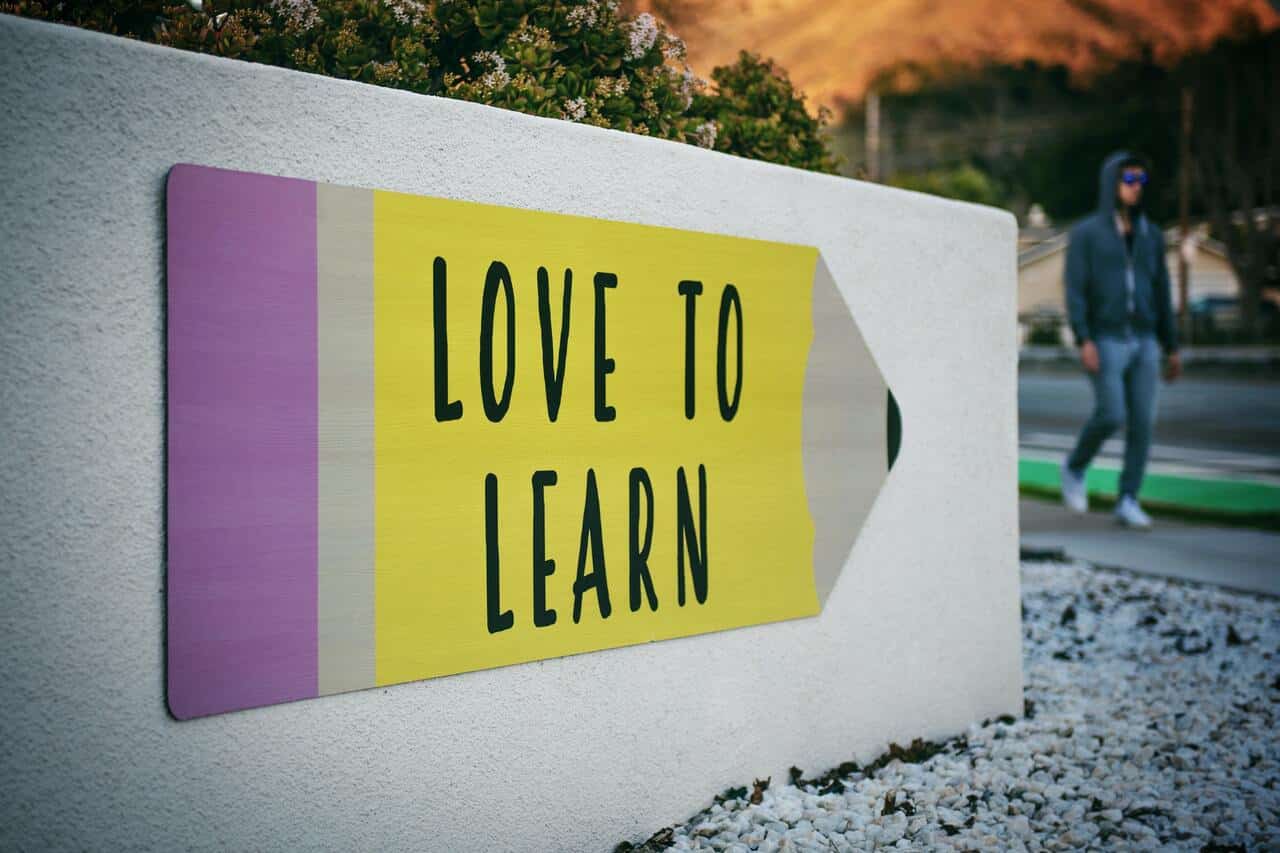
How long does it take to learn Spanish?
DATE:
Today we’re going to be answering one of the biggest questions all beginner students have – how long does it take to learn Spanish?
It’s a question that often comes with its own set of challenges and misconceptions, from feeling overwhelmed to struggling with consistency
And we totally get it. You want to know exactly how much time and effort you’ll need to set aside to be fluent in the language and check it off your bucket list. But to be fair…
That question isn’t nearly as simple as you think it is. So in this article, we’re going to be reworking this question a bit. We’ll talk about what it means to “know” a language, how to judge your level, and some tips to make sure you’re language-learning journey is efficient.
¡Vamos allá!
What does it mean to know Spanish?
Let’s start answering the big question with another question.
What exactly does it mean to know Spanish? When do you reach a point where you can say, “Now I know Spanish. Yesterday I didn’t, but today I speak Spanish.”
It’s a tricky question because you might not even be able to say the same thing about English. Here’s a quick way to think about it:
- Do you know every word in the English language?
- Can you describe the difference between who and whom?
- Do you know what participle clauses are?
Most likely, the answer to those questions is a firm no. But does that mean you don’t know English?
Think about the mistakes native speakers make in English. Depending on where you’re from – you probably make “mistakes” without ever even knowing it!
Maybe we’re digging too deep into these questions. Though it’s important to realize that everyone has a different level of understanding, even in their native language. So it’s nearly impossible to conclusively say where the Does Know / Doesn’t Know markers stand.
Luckily, we do have some different ways we can measure your ability to understand and use a language.
What is fluency and How can I be fluent in Spanish
To answer your question of “how long does it take to learn Spanish?”, we first need to define some key words.
One of the most important words you’ll hear as you’re learning Spanish is the term fluency. Many people’s goal is to become fluent in Spanish.
But again – this is a very broad term that might not mean exactly what you think it means. That’s because fluency refers mostly to the speed and ease at which you speak Spanish.
So here’s the paradox – you might be fluent in Spanish AND be making so many grammar mistakes no one understands you. And the reverse is true, as well. You might speak perfectly – but have a low level of fluency.
Now this isn’t to say that fluency isn’t an important part of your Spanish language journey. But it is only one part of learning Spanish. So if you want to “become fluent”, it might be helpful to look at some other, more specific ways of measuring your language skills.
Common European Framework of Reference for Languages
One of the most prestigious organizations when it comes to language learning is the Common European Framework of Reference for Languages (CEFR).
The European Union has 24 official languages (not counting all of the unofficial regional languages in the continent). So you could say that they have experience knowing how long it takes to learn a language.
CEFR has guidelines that judge your level of proficiency in different skills. In other words – maybe you’re fluent in Spanish, but you couldn’t write a letter to save your life.
The guidelines go from A1 (lowest) to C2 (highest). To make it easy to understand – someone with a B2 level is a non-college-education native speaker.
Though that’s great and all – you’re probably interested in seeing how well you speak Spanish in real life. So here are the self-assessment descriptors for Spanish language learning.
|
Spanish Skill |
A2 |
B2 |
C2 |
|---|---|---|---|
|
Speaking |
I use a variety of expressions and simple terms about my family and everyday life. |
I can participate in a conversation with a degree of fluency and spontaneity. I can debate about daily life and defend my point of view. |
I can join any conversation without effort and I understand colloquialisms and references. I can control subtle meanings and handle any situation without others noticing. |
|
Listening |
I understand basic vocabulary and phrases about things that interest me. I can understand the general idea of short messages. |
I understand speeches and extensive discourse and can follow complex arguments. I understand almost everything on the news and most movies. |
I have no difficulty understanding any spoken speech at a native-like speed. |
|
Reading |
I can read short, simple texts. I can find specific information in daily writing like ads and menus. |
I can read articles about current events and contemporary literature. |
I can read practically any text, including abstract, complex, or specialized texts and literary works. |
|
Writing |
I can write short notes and simple sentences about immediate needs. I can write very simple personal letters. |
I can write clear texts about a variety of topics I’m interested in. I can write an argumentative text defending my point of view. |
I can write clear, coherent texts with an appropriate style. I can present ideas in a logical way and write summaries of complex, professional texts. |
Take your time to go through this chart and figure out where you are! These are only three of the levels, but there are some levels in between, as well. If you want to read all of them – make sure to go to the CEFR page and check out the self-assessment tables.
But here’s another important note – this is just a guide. There are no clear cut-offs here, either. So take it with a grain of salt and use it to judge your Spanish-speaking skills in general.
Now that we’ve defined two very important factors – let’s move on to what you’re really here for:
How long does it take to learn Spanish
So there are definitely some different numbers floating around the internet. The amount of time it takes to learn Spanish depends on a lot of factors. But for English speakers, there are some studies we can look at.
US Foreign Service Institute study
The US Foreign Service Institute released one of the most well-known studies in language learning to date. It certainly isn’t perfect, either. But they studied language learning in relation to native English speakers.
They consider Spanish as a category 1 language – the easiest.
They recommend the number of classroom hours it will take to learn Spanish is between 600 and 750.
So if you’re someone who needs a number – aim for 600 hours of intense study to reach a professional working proficiency.
Notice how those are hours of intense study – not just Netflix binge-watching hours.
The truth
There are a few caveats when it comes to that previous study. Because the FSI calculated the 600-hour number from students who are:
- Native English speakers
- 40+ years old
- Experts in language-learning
So they might have a bit of an upper hand. The amount of time it takes you will depend on your consistency, connection to the language, motivation, number of languages you speak, and even a touch of natural skill.
This is not at all meant to discourage you – on the contrary.
600 hours is a great goal if you have a Type A personality and love to stay organized. But language is complicated and won’t work exactly that way for everyone! So just keep at a pace that works for you – and don’t give up!
Let’s move on to some common misconceptions about language learning and some actionable steps you can take to learn Spanish effectively.
Common Misconceptions About Learning Spanish

Now we know – more or less – how long it takes to learn Spanish. So the next question we have to ask ourselves is – what next?
And to answer that, let’s talk about some common misconceptions when it comes to learning Spanish and what that means for you, as the learner.
Native speakers don’t make mistakes
One of the most important things to know when it comes to learning Spanish is that even native speakers make mistakes.
Languages are difficult and even your Spanish-speaking friends are going to make a mistake every now and again. In fact, the more you start learning languages, the more you’ll realize that languages are constantly evolving.
So if it’s a mistake now – it might not be in 30 years.
DID YOU KNOW…?
The word haiga is used extensively throughout Latin America by native speakers, even though it’s not officially accepted. The RAE recommends haya as the correct form – but the controversy remains. Should it be considered a mistake?
Everyone learns at a set pace
We hinted at this earlier. Not everyone is going to learn at the same pace. Someone who studied English grammar might be able to learn Spanish grammar more easily.
And someone with Spanish speakers in their family might naturally learn quicker Spanish vocabulary than someone without.
There are so many factors that affect your ability to achieve fluency. A mother with 3 kids will probably take longer to learn another language than someone who has the time to go 5 days a week.
Some people have time to go to a traditional language school, while others may opt for a more flexible path, such as teaching their children Spanish at home.
So what does this mean for you?
Take your time to learn Spanish and enjoy the process. You shouldn’t compare yourself to others – you’re doing the best you can!
You have to travel abroad
Another huge misconception is that you’ll only ever learn Spanish if you travel to a Spanish-speaking country. This couldn’t be further from the truth!
Thanks to the internet, it’s easier than ever to learn a language from your own home.
You can read books, watch movies, and even take an online private tutoring without ever leaving your bedroom. Of course, it might be helpful to travel abroad if you have the time and money to do so.
But it is absolutely not a barrier stopping you.
Already have plans to travel abroad? Check out some of our travel Spanish guides before you go!
Fluency means speaking perfectly
We talked about this a bit before, too.
But if your goal is to reach conversational fluency – that doesn’t mean you need to speak perfectly. You might make mistakes when you’re speaking, but people can still understand you.
So throw yourself out there. Fluency is just one aspect of language learners’ skills, so don’t punish yourself for not being perfect!
There’s only one standard Spanish
The last misconception – there’s only one Spanish.
There are many different accents and dialects of the language, so there’s no such thing as “standard”.
Even in the same country, you’ll find multiple accents based on location, class, and sometimes even gender. So don’t worry so much about finding the “right” words or the standard way to say things.
As a beginner – you should be open to many different accents so you can get familiarized with them. Then, once your Spanish level grows, you can adapt and speak the language you choose.
Maybe you decide you love the rioplatense accent or maybe you decide you love how Puerto Rican Spanish sounds. In any case – just choose whichever one you like best.
Want to learn more about different regional accents? Check out our guide on Spanish-speaking countries.
Tips to learn Spanish
Now that you know just how complicated learning languages really can be – we need to talk about some actionable steps you can take to really master the Spanish language.
Just because it’s more difficult to learn a new language than you might have thought, that doesn’t mean you can’t enjoy the journey!
So here are realistic steps you can take to learn Spanish and improve your skills over time.
Set goals
This is one of the best things you can do to help yourself while studying Spanish as a second language. Make sure to set goals over time.
Depending on who you are and what you want to do with the language, these goals can change a lot!
Maybe your goal is to be able to watch movies by Guillermo del Toro in the original language. Maybe your goal is to travel to Spain and walk the camino de Santiago without any problems.
Or maybe your grandparents speak Spanish and you want to be able to talk to them every Sunday.
Whatever your goals are – write them down and take note of your progress. It’s a fantastic way to keep yourself motivated and check on how you’re doing.
Be consistent
This tip certainly isn’t new – but it is one of the most important ones.
Do your best to be consistent with your Spanish learning journey. Even if it is only one hour a day – or even 30 minutes – you need to be consistent.
A great way to do this is to set yourself a schedule ahead of time. Give yourself notifications on your calendar app and block off time to study. This way you’ll never have an excuse.
Consistency is key to learning Spanish – so don’t skip this one.

Don’t be afraid to make mistakes
This is where so many learners mess up. Of course, it’s only natural that you want to speak perfectly – but it’s not realistic.
One of the best ways to learn is by making mistakes. This way, you can learn from them.
So whether you’re in a class or you’re traveling to a Spanish-speaking country, don’t be afraid to make mistakes. It’s a fantastic learning opportunity.
And no native Spanish speakers will judge you for doing your best.
Ask for feedback
This little trick is a great way to speed up your language journey. If you have friends or a teacher, ask them to give you feedback!
Sometimes your friends don’t want to correct you, but it’s a great opportunity to learn from them in a casual environment. So don’t be afraid to ask for feedback.
Though to be fair – some of us are sensitive and we get demotivated. It’s just a fact of life. So have an honest conversation with yourself. Do you get discouraged when you are corrected?
If so, ask your friends for feedback after you make the same mistake twice. Or ask your friends to make a signal – but not correct you. Because that counts as feedback, too.
It’s a crucial part of learning a language. And the more open you are to feedback – the easier the whole process will become.
DID YOU KNOW…?
Lack of feedback is a major reason why people stop making progress. In our Online Spanish Conversation Group Classes, you’ll find teachers who are ready to help you – no matter where you are in your Spanish-speaking journey.
Switch it up!
Don’t be afraid to change your learning habits. Have you been watching La Casa de Papel and Élite and lots of Almodóvar movies?
Try switching it up and watching some Argentinian films or listening to a Mexican podcast.
Because sometimes we get too comfortable and stop challenging ourselves. You need to make sure you can listen to Spanish in a variety of contexts.
So keep pushing yourself! Read a different style of book, listen to a new podcast, talk to people from different countries.
If you want to learn another language, you need to make sure you’re always up for a challenge!
You’ve got what it takes to learn Spanish
The age-old question, “How long does it take to learn Spanish?” is not a straightforward one.
And anyone that tells you an EXACT number is lying to you. Because your journey to learn the language is going to be very different from everyone else’s.
You can use great resources to approximately judge your level and take advice to make your learning process more effective. But ultimately, it’s a personal experience.
So take your time and have fun with your Spanish-speaking journey. And once you’re ready to keep learning, go ahead and sign up for a free private class or a 7-day free trial of our group classes to practice!








